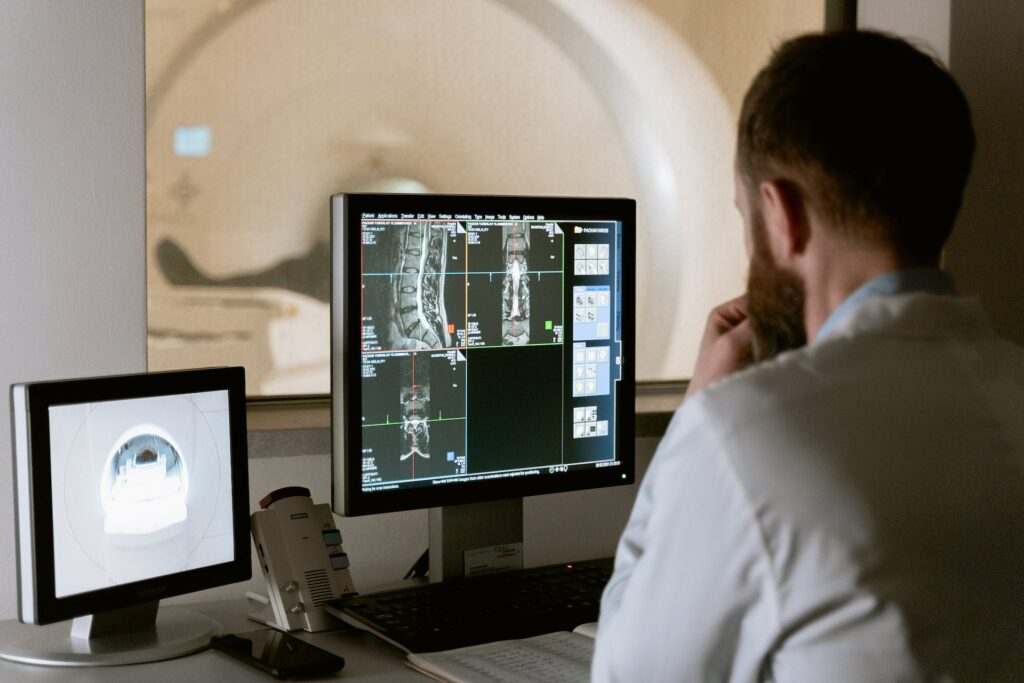To bring a new drug to market costs on average $1.3 billion, according to a recent report in the Journal of the American Medical Association, and takes up to 20 years.
These astronomical sums do factor in the billions of dollars and years of research invested in what potentially promising therapies that ultimately lead nowhere, according to David Harel, the co-founder and CEO of CytoReason, an Israeli startup using AI and reams of data on the human body to create computational models of diseases affecting mankind.
“Developing new drugs is very, very expensive. And the reason it’s expensive is not only because of the direct costs, but also because of the high failure rate,” Harel tells NoCamels.
“Over 90 percent of drug development programs fail. And if they cost tens or hundreds of millions each, the cost of bringing one drug to the market is becoming ridiculously high,” he says.

Founded in 2016 and based in Tel Aviv, CytoReason has dozens of biological and data experts working with pharmaceutical and biotech companies to determine the most relevant and viable new treatments for patients, literally saving both time and money.
Harel says that rising healthcare costs were evident to all, and warns this phenomenon was threatening to shift the focus of the industry from the patients to the industrial processes.
“[This] is something we don’t want to see, but the sheer cost and the huge risk is making things difficult,” he says.
Today, Harel explains, there is an unprecedented amount of scientific data available about how the body works and responds to different medications, but analyzing what that data tells us takes time and resources.
“In order to eliminate the costs associated with trial and error, we need predictability. And to get predictability, you use data,” he says.
And according to Harel, CytoReason’s AI platform is the solution to the time-consuming processes of both data analysis and drug creation, the latter of which is also costly.
The CytoReason platform, he says, is used by both pharmaceutical and biotechnology companies to make the analysis of large amounts of this data for drug discovery and development purposes “cheaper, faster, and more likely.”
For Harel, creating CytoReason was a natural step from his previous role running a company in the US that was part of moving electronic medical records (EMRs) for American patients to the cloud.
It occurred to Harel that such a substantial amount of medical data in one location could be of tremendous importance to medical research.
“What we’ve seen is that once the data is on the cloud, there’s a new opportunity to get value out of it,” he explains. “If it’s on the computer in every doctor’s office – you have few patients here, a few patients there – there’s no way to get value out of the data.”
But once you have a mass of information in the cloud, it is possible to understand behaviors and trends among a significant number of patients.

Back in Israel, Harel discussed this revelation with his friend Shai Shen-Orr, an associate professor at the Technion – Israel Technology Institute who became CytoReason’s co-founder and chief scientist.
Together the two came to the conclusion that they could take scientific data from a range of sources and, as Harel puts it, “mash it all together into a platform that is useful for the doctor or the drug developer.”
Their major source of data was the pharmaceutical companies themselves, who simply could not process the data they had on their own servers, without even considering what other sources of data were out there.
Sign up for our free weekly newsletter
SubscribeThe pharma companies have enormous amounts of data about their drugs, both successful and unsuccessful, Harel explains.
“[But] in every new program, and even any new drug they’re trying to develop, they’re not incorporating everything they have, let alone other people or the academic community. Because in order to analyze all this data, they would need so many people that they would be a tech company, not a pharma company.”
CytoReason takes all of the data provided by the companies – which is bundled together so the individual sources cannot be identified – and using artificial intelligence sorts it into specific models for specific diseases.
These computational disease models are digital representations of the impact of specific diseases on the human body, based on data gathered from sources such as biopsies and blood draws.
“We have a package of all the data describing the disease’s biology in the best way available today,” Harel says. “The pharma companies… use this aggregated data in order to make decisions [about] which drug to develop and to what patients.”
Harel gives the example of a drug company such as Pfizer seeking to develop a new treatment for colon cancer. CytoReason, he explains, would provide Pfizer with a computational model of that disease and its impact on the body that the scientists developing the potential drug can work with.
“The platform allows them to investigate their drug,” he says.
Harel again points out the vast sums involved in drug development, but approaches it from the perspective of money lost by a slow development process.
“A drug that is a good seller would sell over a billion dollars a year if they’re going after the right disease,” he explains.
“Rather than barking up the wrong tree, they would be saving a year of development, and that can be a billion dollars – $3 million per day. If you cut the development process by one day, you’re creating $3 million for the pharma company on average.”

The objective is to get a new drug onto the market as quickly as possible, because the patent for it only lasts 20 years, at which point competitors can make their own generic version, taking advantage of the expensive R&D process paid for by a rival.
CytoReason is not the only company working on this form of computational modeling for drug development, but Harel believes it is the biggest in the world “from a headcount and revenue perspective.”
And rather than just being name-checked because it is one the most prominent pharma firms, Pfizer has been working with CytoReason since 2017, as do other major companies in the industry.
And while Harel is happy to disclose the names of the companies with which CytoReason works, the drugs that they have collaborated on remain confidential.
The name of the company comes from a suggestion by Shen-Orr, Harel says. The word reason was included to represent the fact that the diseases are being reasoned out, while cyto means cells and is a latinized form of the Greek word kytos or hollow receptacle.
“The cells are the atomic unit of the human body,” Harel points out, “and in order to understand diseases and treatments properly, you need to understand the cells.”
Related posts

Editors’ & Readers’ Choice: 10 Favorite NoCamels Articles

Forward Facing: What Does The Future Hold For Israeli High-Tech?

Impact Innovation: Israeli Startups That Could Shape Our Future




Facebook comments